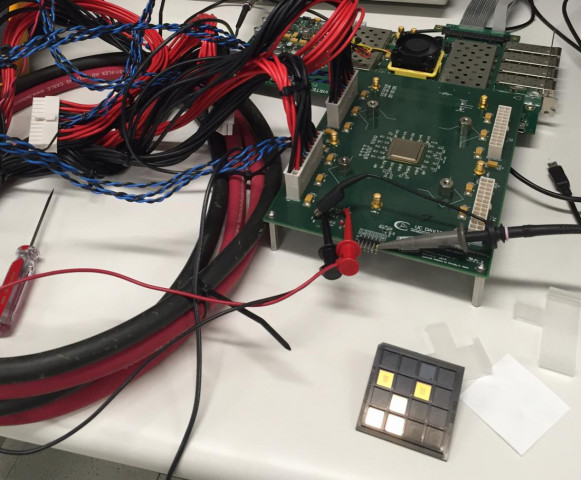World’s first 1,000-core processor developed
The new chip can execute 115 billion instructions per second while dissipating only 0.7 Watts

Kilo-core chip was designed by graduate students in the UC Davis Department of Electrical and Computer Engineering. PHOTO COURTESY: ucdavis.edu
Dubbed as the ‘KiloCore’ chip, the energy efficient processor has a maximum computation rate of 1.78 trillion instructions per second and contains 621 million transistors.
Developed by a team of graduate students at Department of Electrical and Computer Engineering, UC, the processor was unveiled at 2016 Symposium on VLSI Technology and Circuits in Honolulu on June 16.
World's fastest supercomputer entirely made in China: survey
While multiple-processor chips have been created before, none exceed about 300 processors and only few have been sold commercially, according to an analysis by developers.
“To the best of our knowledge, it is the world’s first 1,000-processor chip and it is the highest clock-rate processor ever designed in a university,” said Bevan Baas, professor of electrical and computer engineering, who led the team that designed the chip architecture.
The processor is extremely handy for very parallel tasks like encryption, crunching scientific data and encoding videos as each processor core can run its own small program independently of the others.
Apple, Google locked in battle for supremacy
The idea is to break an application up into many small pieces, each of which can run in parallel on different processors, enabling high throughput with lower energy use, Baas said.
Cores operate at an average maximum clock frequency of 1.78GHz, and transfer data directly to each other rather than using a pooled memory area that can become a bottleneck for data, claimed developers.
Nust launches Pakistan's fastest supercomputer
Besides being superfast and executing instructions more than 100 times more efficiently than a modern laptop processor, the chip is the most energy-efficient “many-core” processor ever reported, said Baas claiming that 1,000 processors can execute 115 billion instructions per second while dissipating only 0.7 Watts, low enough to be powered by a single AA battery.
KiloCore chip was fabricated by IBM using their 32-nanometer CMOS technology, while the newest processors are using a smaller, more efficient 14nm technique. Although we are long way from seeing mass production of these chips, it opens the possibility of many-core processors finding their way into mobile devices.
Have something to add to this story? Share it in the comments below.



















COMMENTS
Comments are moderated and generally will be posted if they are on-topic and not abusive.
For more information, please see our Comments FAQ